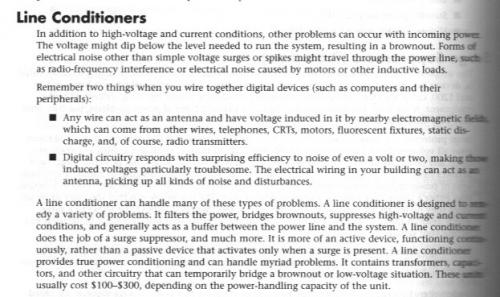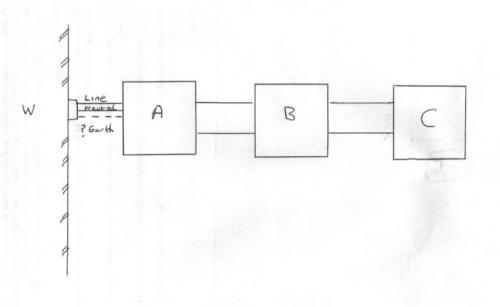-
Posts
18270 -
Joined
-
Last visited
-
Days Won
104
Content Type
Profiles
Forums
Events
Everything posted by studiot
-
No I have divided all my page numbers by zero.
-
Considering your division of apples, Here is a pretty trick: Consider $ instead of apples and divide $1 by 0.0000000001 How many dollars do I now have? Perhaps if you knocked on the door of the Greek treasury you could solve their crisis with this wonderful new maths.
-

The "Whatever Theory" Identifying The World...
studiot replied to whatever theory's topic in Speculations
Let me just start this contribution by saying that this is the first time I have looked at this thread. The choice of subject title is (was) not attractive to look at before. However it has obviously been going a while and attracted some attention. I cannot claim to have studied every post in detail so will have missed much and I apologise if I repeat stuff unnecessarily. First let me say that the idea of studying the surface colour of object has been attractive and used in many ways for a long time. Such study has even been extended beyond the surface as in streak tests used by mineralogists and chemists. Of course the idea of these is that they should be independent of source. However natural minerals are never pure and the location of source can often be identified by the impurities, although by more sophisticated techniques than colour alone. Although naturally occurring, these are of course inanimate and you seem to be concentrating on the animate. It has been suggested that your study would benefit from looking into the reasons for the evolution of particular colour schemes. To this I would add looking into the nature of colour perception, the effect of the transmission path between observer and object. The nature of the information gained (ie the picture and its colour model) The conditions pertaining at the time of the observation (photograph) We developed and use the RGB colour model because almost all life uses the same chemical reaction to perceive colour. There are RGB receptors in our eyes that are essentially the same as those in a clour TV camera or the eyes of an iguana. This affects both instrumental measurements as well as eye observation. It is well known that coulours are seen differently close up and at distance, particularly in haze. This affects both instrumental measurements as well as eye observation. You are taking digital photographs. These are fundamentally different from wet chemistry photographs. Further most programs used to store and present the image change many of the pixels RGB values depending upon the values of neighbouring pixels. This does not happen in our eyes, but optical instrumentation is subject to this, so what you think you are measuring may not be the original vlaues. You should look up the idea of colour gamut. Life forms change their presented colour according to circumstance, for instance arctic animals grow white coats in winter. Some of this is voluntary, some dpends on external influences. The actual perceived colour of say a flower depends upon the time of day, the aspect of the view, the age and condition of the flower, the shading and or reflections from other objects. It really is a huge subject and much work has already been achieved and is there to take the benefit of. I am attaching a digital photograph to illustrate some of these points for discussion. What do you think is the proper red for the red flowers? -
I, and many others, have given you several reasons. Do you need more? Hey, Strange, did you really say zero was undefined or was it division by zero?
-
I have a title Do-It-Yourself
-
I am writing a book. I have the page numbers complete, now all I need to do is fill in the rest......................................................
-
Here is a simple explanation of extending fields. http://www.sjsu.edu/faculty/watkins/infincalc.htm
-

Colors in the spectrum and entropy
studiot replied to petrushka.googol's topic in Modern and Theoretical Physics
Light can travel indefinitely hrough a vacuum, without energetic encounters. This is just a silly argument. All I said was that light has an energy level so you can apply entropy considerations to it. In circumstances where there is only one level available there will be zero entropy change. Most light propagation is not like this since it spreads out, reducing the energy density, distributing it over the available volume, thus increasing the entropy. -

Colors in the spectrum and entropy
studiot replied to petrushka.googol's topic in Modern and Theoretical Physics
Thank you, John, so you have described an energetic process, which is all I said in the first place. -

Colors in the spectrum and entropy
studiot replied to petrushka.googol's topic in Modern and Theoretical Physics
Thank you for that information, I will need to look at it. Can the scattering be considered elastic or inelastic? -

Colors in the spectrum and entropy
studiot replied to petrushka.googol's topic in Modern and Theoretical Physics
Unless there is energetic interaction in the different paths there is no entropy difference in one path or one hundred paths. -

Colors in the spectrum and entropy
studiot replied to petrushka.googol's topic in Modern and Theoretical Physics
Forgive my ignorance but how will monochromatic light be split into other colours? -
A three dimensional object with a hole through it (doughnut) is different from a three dimensional object without said hole. So is the hole nothing or something?
-

Colors in the spectrum and entropy
studiot replied to petrushka.googol's topic in Modern and Theoretical Physics
Actually I don't see this as a dumb question and Boltzman's distribution can be applied to this. However there is only one available energy level unless the light interacts with something and then the system changes anyway. Any colour is a mixture of frequencies of light, whether they are combined or split up by prism. However left to their own devices there is no tendency for say red light to self convert to blue light and unless this can happen there is only onefrequency and therefore energy level available to the red photons. So there is no entropy change when we split light containing red photons and blue photons by prism. The red remains red and the blue remains blue. -

Found It! Countdown From August 2008, "100 Months"
studiot replied to Harold Squared's topic in Earth Science
Curiously enough, shortly after I put up my post#8, all the lights went out. We had a power cut from 12 midnight to 12.30 approx. -

Found It! Countdown From August 2008, "100 Months"
studiot replied to Harold Squared's topic in Earth Science
There 's a guy been the corner of my street for the last 18 or so months with a placard saying "Repent, The World endeth next Month!" -
That's real fine, DrDoggy, We are getting to what you are really after. It does not matter what table you get you electron volt values from, they they should be the same since there is only one definition. What you need to remember from a chemistry point of view is that every reactant and product is in a particualr state and the energy balance of the reaction reflects the energy required to place those reactants and products in that particular state, as well as the energy obtained from/supplied to the reaction. Every table describes the state of the reactants and products (called standard conditions by that table). You may need additional information to translate the reactants or products to the states in their final condition in the reaction equation.
-
That doesn't explain where you want to go next???
-
Please tell an ignoramus what an AGW guy is?
-
OK, as I understand it Mordred please chip in as you see fit. Because of your location you have an unreliable mains electricity supply. You wish to run some mains equipment that is sensitive to mains unreliability. I have called this block C or unit C on my diagram. Electrically it is the intended load. You have purchased units A and B to help with the situation. You do not want units A and B for themselves, just to run unit C (and perhaps D, E etc). First and most important. I have shown you mains electricity supply as a wallsocket W with three terminals. Line (some wrongly call it live) Neutral Earth Is this correct? What indications are there for earthing of units A and B (and load C)? I have, for the time being only showed two connections here (line and neutral) How many separate wires are there in the cable that connects ~ W to A A to B B to C Now I am of the opinion that your unit A is what is properly called a line conditioner. Any other more fnacy name is just advertising fluff. Does this sem to describe it?
-
Physics in the UK suffers from the lack of an upper level offering a career path as in Chartered Engineer. Many physics graduates used to join one of the many government research eastablishments, but our government in its wisdom has dismantled most of these. Of the pure physicists I have come across over the years. Two went in to the building and construction industry and one eventually became a director of a multinational and a director of the Chartered Institute of Marketing. One took a Phd and now works at CERN And one became an undertaker.
-
This is the most useful thing you have said so far and is a simple short answer to a question we asked at the beginning. As a non electrical expert (no disrespect intended) why do you keep guessing what an electrical expert might need/want to know, instead of putting a lot of effort into telling us things of uncertain nature. I will post a diagram later of what I think you have told us so that we can proceed.






